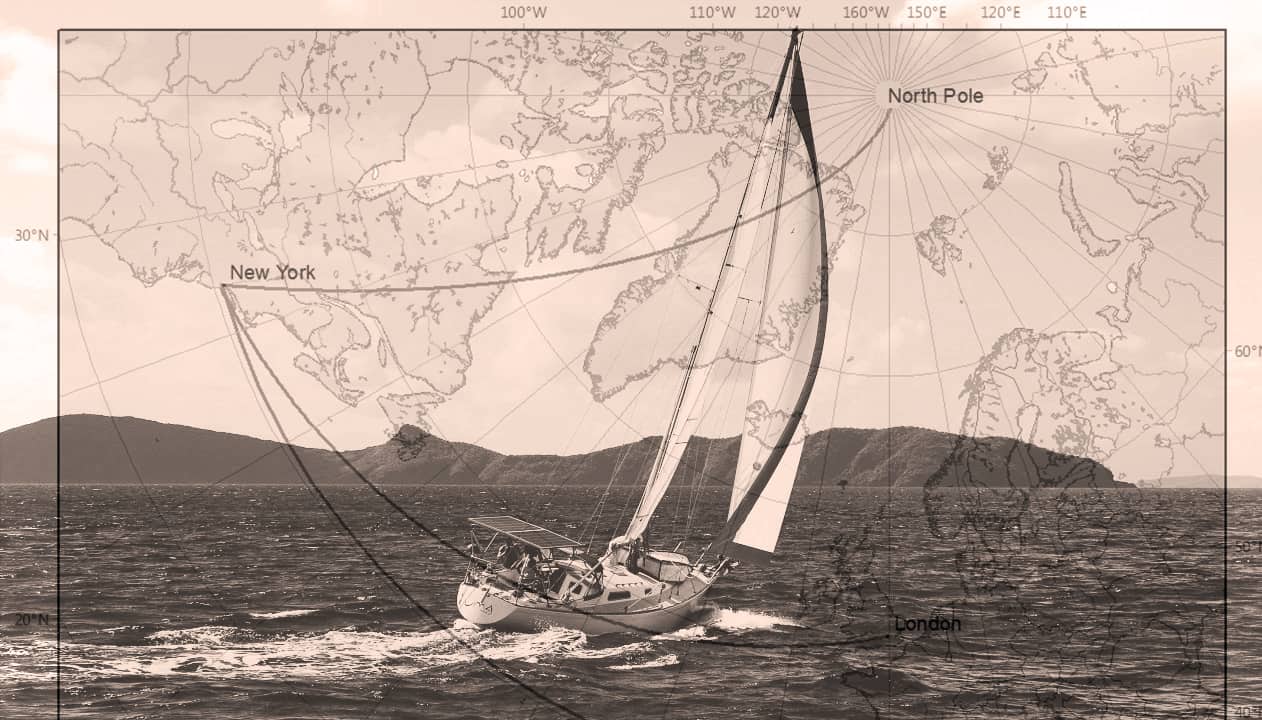Critical takeaways
- In sailing, the rhumb line is the shortest, most direct route between Point A and B. However, external factors such as tides, weather or obstacles seldom allow ships to take this direct route, and they must compensate for these factors.
- Businesses in crisis also need a clear sense of their endpoint – the Point B on their crisis rhumb line – to succeed.
- As with sailing, many external challenges will try to divert businesses from their course and those that merely respond to the external factors without a clear endpoint are unlikely to succeed.
The shortest distance between two points is a straight line from Point A to B, and in sailing, this is referred to as the rhumb line. You use this imaginary line to measure your performance and determine whether you’re on or off course. This is easier said than done and taking a straight line from a map and plotting this at sea can be hard. The curvature of the earth, map inaccuracies and discrepancies with even highly sophisticated GPS all make this harder in practice than it might seem.
Nevertheless, the rhumb line gives us a clear link between our start point and destination, so we always know where we came from and where we want to end up.
However, following the rhumb line is also difficult as some factors can push you off course. The wind, tide or currents, land or seaborne obstacles and bad weather can all cause you to have to change course at times. However, having a clear idea of your destination will allow you to make the necessary adjustments to get back to your rhumb line.
I completed a trip not too long ago over 800 miles from Bermuda to the Virgin Islands, and while I was thinking about our route and rhumb line, I realized that this is very much like the situation you face in a crisis.
Your employees are like the wind: they are the energy and the force that will get you from A to B efficiently. They’re the ones that are going to help you manage the situation and power you through the crisis. However, you need to be attentive to how the wind is blowing. If you face internal resistance or lack buy-in from staff, you will end up fighting the wind with potentially disastrous consequences.
Issues related to litigation are like the tide. The saying goes that time and tide wait for no-one and litigation is the same – it is an inevitable fact of life that a company in crisis will face litigation. Litigation has an impact on how you get from A to B and what your ultimate end state might look like but, by itself, it won’t stop you reaching your destination.
You will also face obstacles in a crisis and, like a spit of land or other ship, these aren’t things you can control. The facts of the situation are the facts, regulations are regulations, and activist shareholders are activist shareholders. These aren’t things that you have any control over. You also cannot change the industry you are in nor the executive leadership you have. So you need to identify any potential obstacles and work out how to navigate around these.
Finally, you will face the ‘weather’ associated with a crisis and no matter how good you are at forecasting or ‘looking around corners,’ this can catch you out. So you have to be able to anticipate what the weather might be and account for that. And make sure that you have Plan B (or C or D…) ready if something unexpected crops up on the horizon.
However, none of this matters if you don’t have a clear idea of where you want to go in the first place.
You can head off to sea from Point A and sail around, your path directed by whatever conditions that you encounter. You will have an interesting – maybe very interesting – trip but there’s no real chance you will end up at Point B. You have no rhumb line to fall back on.
It’s the same in a crisis except there is no good outcome if you don’t get to your objective. Without a clear understanding of your destination, all your efforts to manage a critical moment or crisis will be unsuccessful.
As we work with our clients, we advise them to have a clearly articulated understanding of what is the desired outcome: what’s their Point B? What do they want to accomplish and how do they want to get there? That way, their destination is always clear, and the rhumb line never changes. Having that clear destination, being able to understand the concerns and motivations of staff and stakeholders, knowing what litigation might look like and having a clear-eyed understanding of the facts will best set you up for success.
That way, no matter what crisis ‘weather’ might try to push you off course, you will be able to adapt and use your rhumb line as a reference to help you get back on track and reach your destination.
Far too often we see clients dive in, responding to the stimuli around them – the wind, the tide, the obstacles or the weather – without being conscious of where they ultimately want to end up. This is the crisis equivalent of being adrift in a storm.
So set your crisis rhumb line as early as possible and focus on your desired end-state. Respond to the challenges that come your way, but no matter how far off course you are pushed, you will always be able to return to that path. That way, you can reach your destination in the best shape possible, and maybe enjoy a beer on the dock when you’re done.


